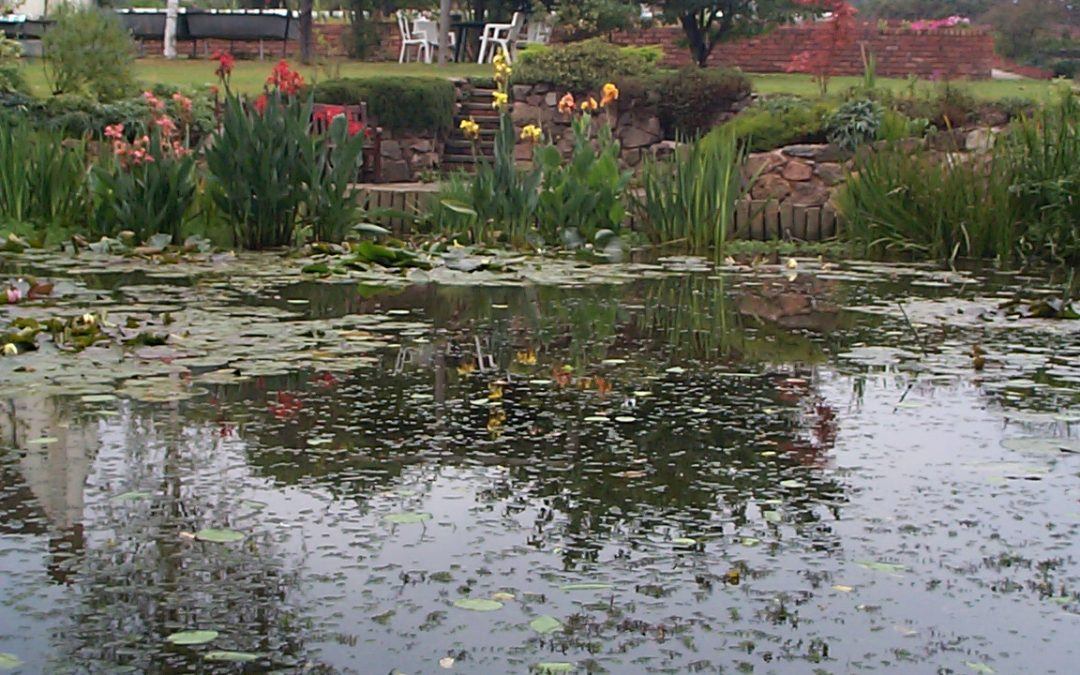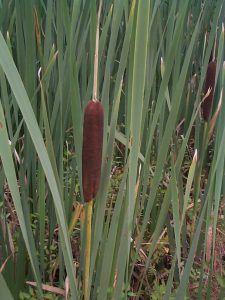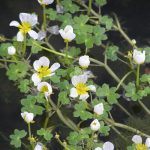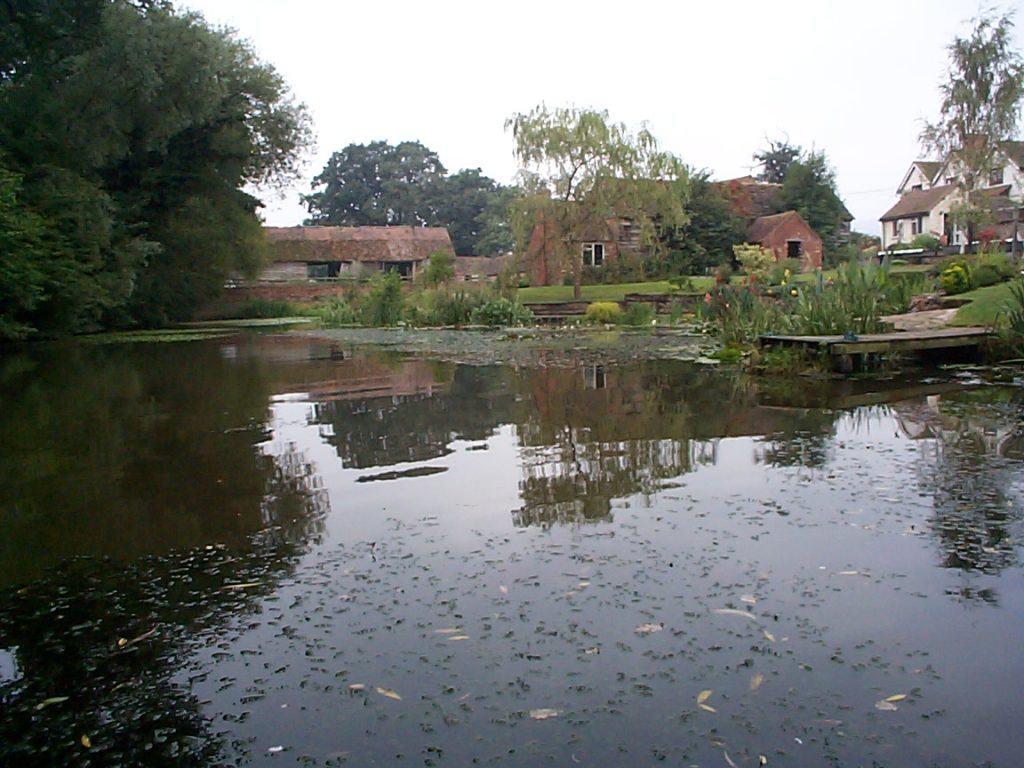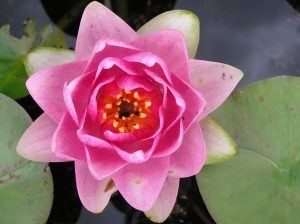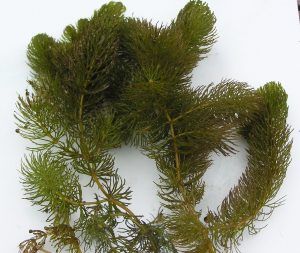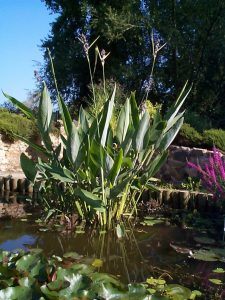Planting up a lake or a large, earth-based pond poses a different challenge from planting up a lined pond or garden pool.
A large earth-based pond or lake environment offers an ideal opportunity for pond plants to run, grow and expand. You do have to be careful to factor in methods for controlling those that are potentially invasive and that means many native pond plants. By definition, our native species love our growing conditions and are designed to take greatest advantage of the local environment.
Marginal pond plants like typha latifolia (reedmace/bullrush), sparganum ramosum (burr reed), and phragmites australis (Norfolk reed) seed readily and also spread vegitatively through root growth.
Planting typha latifolia where the base of the pond drops away steeply can control root spreading, but as it seeds so prolifically, it will rapidly colonise any suitable nearby location. It can also be partially controlled by cutting the stems below the water level.
The margins of a lake provides an ideal habitat for marginal plants, boggy/wet ground plants, moisture loving plants.
Shallow water areas can be planted with marginal pond plants and also some of the mud loving oxygenating pond plants such as callitriche verna (starwort) and ranunculus aquatilis hederaceus (water crowfoot).
In nature, all of the bank of an earth-based pond will be colonised by plants, so you can plant up the entire circumference with a whole range of different plants. Where plants are competing, the most vigorous will always outgrow other more delicate varieties, so it is prudent to include some natural barriers between specimen plants and those nearby.
You can use natural indentations of the waterline, stone breaks or even timber to define an area for growing specimen plants. Keep any eye on them until they are well enough established to fend for themselves, but remember that the old adage “the survival of the fittest” also applies to pond plants and the strongest will always prevail, so unless you are aiming for an impenetrable jungle, you will have to develop a continuous maintenance programme.
Water Lilies
Obviously we would always recommend the planting of water lilies. They are a beautiful addition to any planting scheme and, as well as providing interest and colour, also help to shade out blanket weed, and add to the ecology of the aquatic environment.
It is a common misunderstanding that all water lilies must be planted into deep water. A water lily will thrive best in warm, still water with plenty of sunlight, the deeper the water, the colder and darker it gets. In fact, unless you are happy to don a wet suit and snorkel, don’t plant into water more than 70cms deep as it makes any maintenance of the plants a real challenge. Just remember that at some point you will need to control the spread of your water lilies and unless you can breathe under water or you can partially drain the lake to lower the water level, you will not be able to get to their roots.
Most water lilies will grow happily with 45-75cms of water over the surface of the soil into which they are planted. Obviously the largest water lilies are suitable for lakes, but medium lilies can do very well if you have any areas of slightly shallower water closer to the bank.
Remember when adding a new, young water lily to your pond, always introduce it gradually to its final depth of water. Never plunge a young plant straight into the bottom of the lake. Start by standing each lily in its planting crate on blocks, an old beer crate or some other suitable support so that there is no more than 20cms depth of water covering the soil to start with. When the leaves reach the surface and have built up strength, drop the plant down into deeper water where the leaves are just below the surface. Repeat this process until the new water lily is in its final required position.
It may be useful to have a nursey area of suitable depth where you can start your lilies off. Once they are growing strongly, with a pair of strong scissors, cut down through the mesh of the planting crate in three or four places so that when you move the plant to its final location, it can expand into the surrounding area.
Oxygenating plants
Be very cautious about introducing any submerged oxygenating plants into a large body of water. The long-stemmed varieties like elodea Canadensis (Canadian pondweed), lagarosiphon major (elodea crispa) – a non-native and invasive plant banned under EU regulation – and potamogeton crispus (curly pondweed) can be extremely invasive and difficult to control.
As a rule for most lakes submerged oxygenating plants are not necessary for aeration. Slow growing varieties such as ceratophyllum dememrsum (hornwort), and ranunculus aquatilis can provide an excellent deep water habitat for insects, other invertebrates, newts and frogs, and a safe haven for baby fish.
The beauty of an earth-based pond
Above all, an earth-based pond provides a wonderful large canvas for imaginative planting and displaying large architectural plants like stunning thalia dealbata.
Caltha polypetela (greater marsh marigold) and primula florindae (Himalayan cowslip) will provide similar structural focus around the margin.
And there is no more beautiful sight on a sunny Summer’s day than the Monet effect of a lake rafted with drifts of water lilies and surrounded by banks of wonderful marginal plants!

